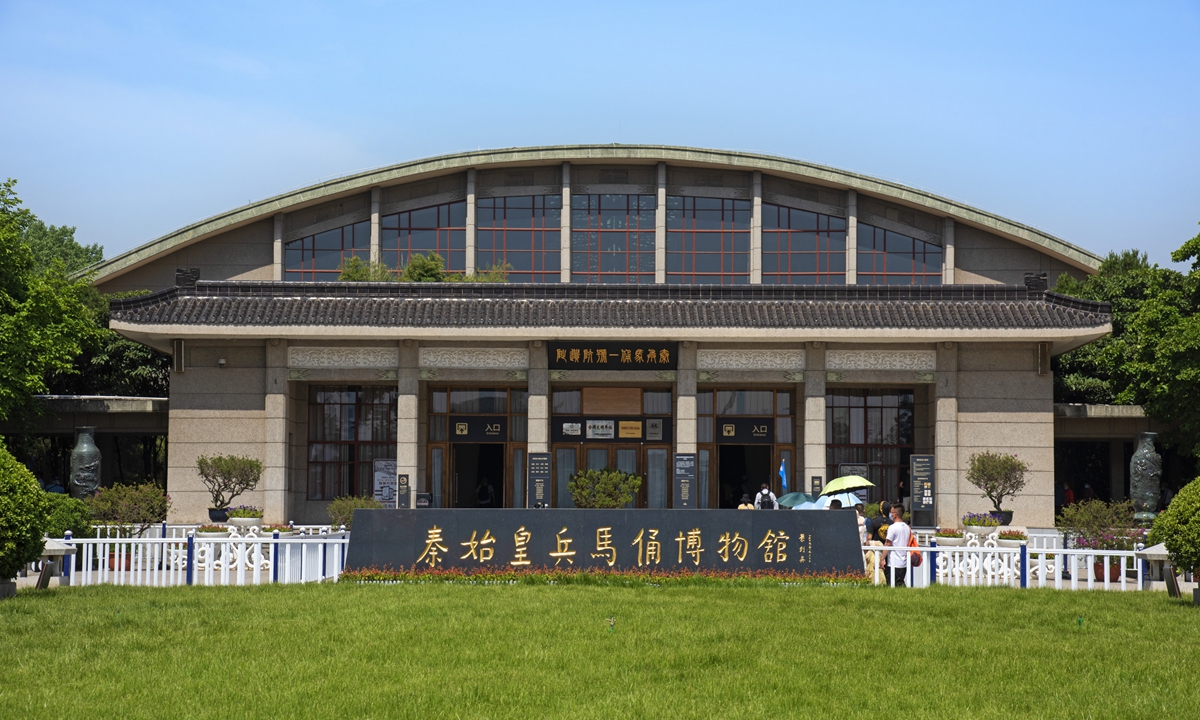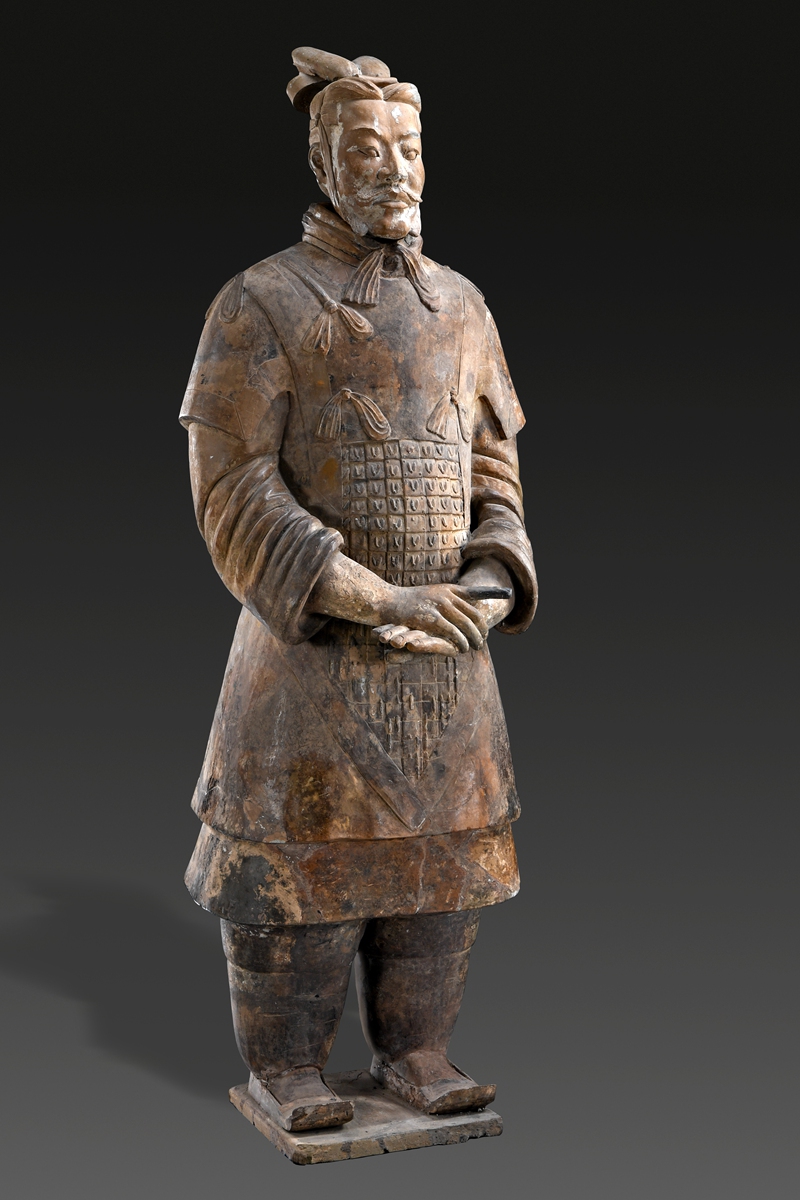
The Emperor Qingshihuang's Mausoleum Site Museum in Xi'an, Shaanxi Province Photo: VCG
Editor's Note:
Through the continuous efforts of several generations of Chinese scholars, major research projects, such as the Project to Trace the Origins of Chinese Civilization, have shown that China's history includes 1 million years of human evolution, 10,000 years of culture and more than 5,000 years of civilization.
Thousands of museums across the country, with their rich collections and exhibits, are like stars lighting up the Milky Way that is China's history.
In this series, the Global Times will introduce 10 museums from across the breadth and width of China, exploring their contributions to the country's diverse, inclusive and continuous civilization.
This fourth installment of the series brings readers to the Emperor Qinshihuang's Mausoleum Site Museum in Northwest China's Shaanxi Province.A UNESCO World Heritage Site, the Mausoleum of Qinshihuang - the first emperor of China - is China's largest and most opulent imperial tomb as well as a "gold card" for traditional Chinese civilization. The Terracotta Warriors discovered at the tomb are known as the "Eighth Wonder of the World," and have become a symbol of Chinese culture abroad, with many countries eagerly seeking to put them on display through joint exhibitions to showcase their diversity and mystery.
For decades, Chinese archaeologists from the Emperor Qingshihuang's Mausoleum Site Museum have been tasked with the tough mission of decoding the secrets of the mausoleum and helping the world better understand this awe-inspiring feat of engineering.
Tough but significantLocated at the northern foot of Lishan Mountain, 35 kilometers northeast of Xi'an, capital of Shaanxi Province, the mausoleum of the first emperor of the Qin Dynasty (221BC-206BC) was constructed by 700,000 laborers over a period of 39 years, according to
Shiji, or
The Records of the Grand Historian, a monumental history book of ancient China compiled about 2,000 years ago.
However, this historically significant tomb still remains partially unexcavated due to its massive size and ingenious theft-prevention mechanisms. Archaeologists are currently working on developing cutting-edge technology that will enable them to excavate the tomb in a non-intrusive way that will best preserve the relics buried within.
Since excavations first began in 1974, archaeologists have been carrying out preservation and research efforts at the site, which have highlighted the practical and innovative nature of Qin culture and enriched the study of the history of the Qin Dynasty.
Numerous accomplishments have been made over the years. More recently, in the early months of 2023, the third excavation of the Terracotta Warriors and Horses Pit No.1 saw significant progress, with Chinese archaeologists uncovering over 220 terracotta figurines. This has allowed them to begin clarifying the rules to how the terracotta soldiers were arranged and also learn more about how they were made.
Traces of damage to a corridor is strong evidence that Xiang Yu, a prominent military leader and political figure who tried to proclaim himself emperor during the fall of the Qin Dynasty, had once attacked the tomb.
Pit No.1, which is 230 meters long and 62 meters wide, is the largest of the burial pits inside the mausoleum. Dozens of long swords have also been discovered in the pit and the discovery of a sword-bearing figurine provides new clues to how soldiers, and perhaps the emperor himself, wore their gear.
Artifacts carry the culture and heritage of a nation, reflecting its profound cultural background. Through scholars' research and interpretation, these cultural relics have garnered great attention, leading to a continued archaeological and museum "fever." Qin culture-themed exhibitions, represented by the Terracotta Warriors and Horses, have become the best witness of cultural exchanges and mutual learning between China and foreign civilizations.

A Terracotta Warrior Photo: Courtesy of the Emperor Qingshihuang's Mausoleum Site Museum
Representing a civilizationAfter the country's optimization of COVID-19 measures in late 2022, the museum has seen a significant increase in visitor numbers.
In celebration of the International Museum Day which falls on May 18, the museum has planned various educational and interactive activities focused on the theme of "Museums, Sustainability and Well-being."
These activities include live demonstrations of traditional Qin hairstyles, school outreach programs featuring historical artifacts and knowledge quizzes, volunteer recruitment drives at universities, and hands-on experiences such as learning to write the Qin seal script and repairing terracotta soldiers.
"By engaging visitors in these events, the museum aims to share the essence of its cultural heritage, tell the stories behind its artifacts, and bring the history of China to life for visitors," Tian Jing, a deputy curator at the museum, told the Global Times.
Tian said that Qin culture had a significant impact on the formation and evolution of Chinese civilization as the dynasty established China's first centralized government with power over an entire unified nation. Qin culture embodies unique philosophical concepts, humanistic spirit, and moral standards that represent a crucial reflection of the political, economic, cultural and military systems of a united empire in Chinese history.
"Understanding the value of Qin culture and summarizing its characteristics through in-depth research and interpretation is essential to comprehending Chinese civilization's 5,000-year history," Tian said.
She noted that research into Qin civilization is sure to reveal more information about the early development and origins of Chinese civilization.





